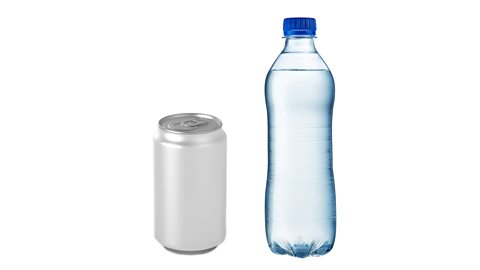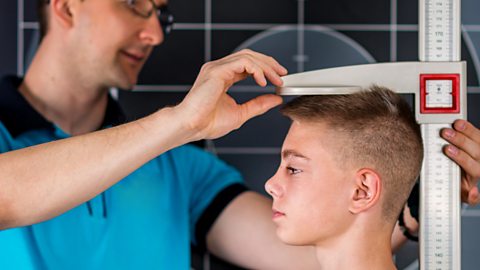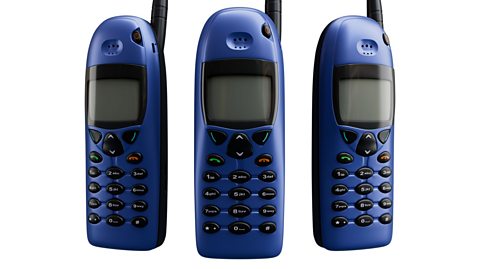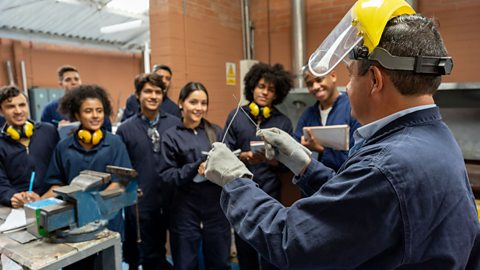Key points about the design process
- Creating a successful product involves a series of planned steps, each contributing to a well designed outcome.
- From initial ideas to final evaluation, every stage builds on the last, ensuring the product meets the intended needs.
- Key people play distinct roles in designing, making and using the product.
- Their collaboration throughout planning, making and testing is crucial to shaping effective, functional designs.
Understanding the design process
Design opportunity
Spot a problem or need that your product could solve.
If you notice people often lose their keys, the design opportunity is to create something to help them keep track of their keys.
This step defines why you are making the product and who it will help.Research
Gather information about the problem, existing solutions and the best materials or technology to use.
If designing a phone charger, you might look into battery types, compare current chargers, or read reviews to learn what people like or dislike.
Good research gives you the knowledge to design a product that meets user needs and stands out from similar products.Brief
Write a clear goal or statement for your design, outlining what it must achieve and any limits (like size or cost).
For a key holder, the brief might be 'design a portable key holder that’s easy to carry, keeps track of keys and is durable and stylish.'
This is the plan or 'mission' for your product, keeping the design focused and clear.Specification
Create a list of specific requirements for your design, like dimensions, materials, or durability standards.
For the key holder, specifications could include size (must fit in a pocket), material (lightweight and durable) and features (clip for easy attachment).
Specifications are a checklist to make sure your design meets all necessary requirements.Idea generation and development
Sketch, model, or visualise different ideas, refining and choosing the best ones.
You might draw or 3D model different key holder designs—a keychain, a pouch, or a clip on device—before selecting the most practical design.
This step encourages creativity and helps find the strongest ideas to develop further.Manufacture
Build a prototype or first version of your product using the chosen materials and techniques.
You might create a prototype of your key holder using a 3D printer or assemble it by hand to test how well it meets your specifications.
Manufacturing allows you to turn your design into something physical and test if it works as planned.Testing and evaluation
Test the product’s performance, gather feedback and look for areas to improve.
You could test if the key holder securely holds keys, is easy to use and is durable. Feedback from other users might suggest tweaks to improve its design.
This step ensures that the final product is reliable, user friendly and ready for real world use.
Analysing the design process
After completing all stages, reviewing each step helps learn from the design journey.
Ask:
- did I clearly identify the problem in the design opportunity stage?
- was my research thorough and relevant?
- does the final product match the brief and specification?
- was feedback during testing helpful for making improvements?
By analysing each stage, you can see what worked well and what could be improved in future projects.
The client, user, designer and maker each play key roles in product development. They collaborate throughout commissioning design manufacture and evaluation stages. Clear communication ensures the product meets functional and aesthetic needs.
Each party's input is essential in delivering a successful product that satisfies client expectations and user requirements.
Learn more about understanding the design process.
Roles of client, user, designer and maker
The client's role
- Commissioning: defines requirements; sets budget and timescale
- Design: approves designs and ensures alignment with goals
- Manufacture: oversees progress; ensures quality meets expectations
- Evaluation: reviews final product; checks if requirements are met
The user's role
- Commissioning: provides feedback on needs, preferences, and functionality
- Design: offers input on usability, practicality, and aesthetics
- Manufacture: may give feedback on prototypes or during testing stages
- Evaluation: assesses performance, comfort, durability, and overall satisfaction
The designer's role
- Commissioning: develops concepts; ensures client and user requirements are met
- Design: creates detailed designs; considers materials functionality
- Manufacture: communicates design specifications; ensures manufacturability
- Evaluation: reviews product; tests it against design specifications
The maker's role
- Commissioning: collaborates with client and designer to plan production
- Design: provides input on manufacturability; cost effectiveness
- Manufacture: produces the product, ensuring quality control
- Evaluation: ensures product meets specifications; suggests improvements
BBC Bitesize Design and Technology - Design Process
The design process provides us with a series of important stages during the design and development of a product or solution. This involves exploring, creating, and evaluating ideas to develop a product. The design process also isn't exactly linear, meaning that it doesn't have to be completed in a specific order. However, these steps still play a very important role in the process as a whole.
Normally the process will start with the design opportunity. This could come from a client asking for a certain product to be manufactured, or even the engineer themselves. Spotting a gap in the market or an unfulfilled need. Research is a very important stage in the design process.
Research will involve looking closely at the design opportunity to clarify exactly what the client needs or what exactly is the perceived gap in the market research will also help gain new knowledge into areas that will help design the solution. Some example areas of research may include analysis of similar solutions, investigation of suitable materials, consideration of suitable manufacturing processes. Once you have completed your research, the next stage should be to form a design brief.
A design brief is a short outline of the key details of a design project, including the goals, deliverables, and even a visual direction. It can then be used as a reference throughout the rest of the process. The next stage of the development is completing a design specification. This should be a detailed list of requirements for your design. It should also list the issues that your design plans to address. Some examples of what should be included in your design specification are size, materials, cost, appearance, or aesthetics.
You can then reference back to your design specification throughout the rest of the design process. The next stage of the design process is idea generation. At this point in the process, you can come up with your possible designs or solutions to the initial design brief should be done while referencing your design specification and the completed research throughout a range of different designs developed using sketches and drawings with annotations will help you choose the best solutions.
Once you have completed the idea generation stage, you will then have to decide on your final design. This should be based on an idea you've selected from your generated ideas. The next stage in the process is manufacture the final stage of the design process is then to test and evaluate.
Test yourself
More on Design and innovation
Find out more by working through a topic
- count3 of 5

- count4 of 5

- count5 of 5

- count1 of 5
